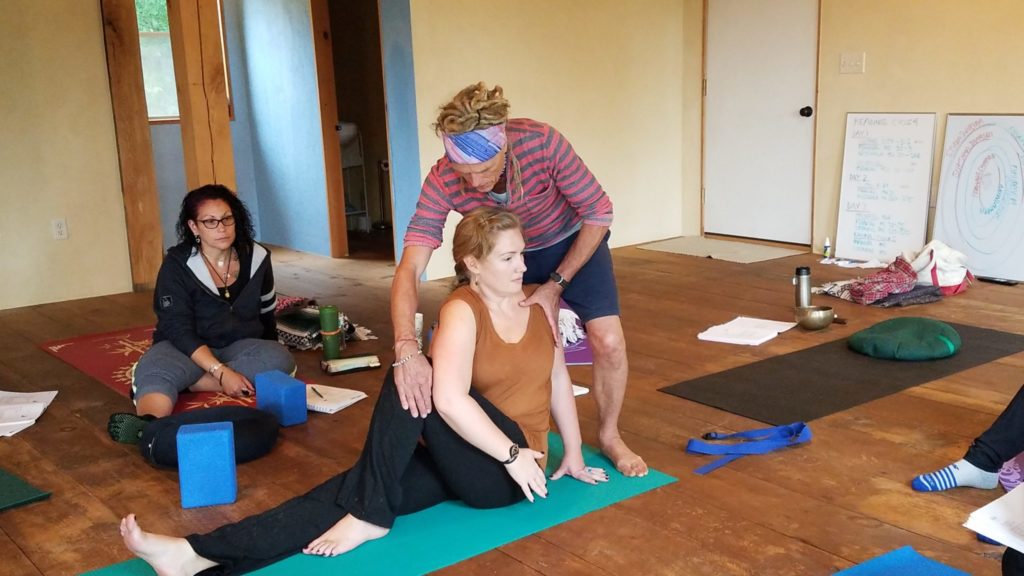Diving Deeper into the Practice of Bramacharya

The yama’s are the first limb of the eight limbs of yoga, the ancient wisdom of the sage Pantajali who wrote the yoga sutras over 2000 years ago. The fourth branch of the Yama’s is Bramacharya. Bramacharya is often referred to as “sexual restraint”:
Much like modern day monks and nuns who take their vows of chastity, the yogi was expected to devote all of his energy to seeking union through the austerities of meditation, breathwork, chanting, study, and other yogic techniques. Sexual excitation can use a lot of our vital energy and potentially deplete it if excessive or expended without integrity, so this practice was essential for the renunciate.
https://www.awakeningself.com/writing/mastery-of-your-energies-brahmacharya/
However, as you dive deeper into this term you learn that the practice of self restraint applies to many aspects of one’s life.
The Yamas
The Yamas’s represent the moral compass of the self in the world today. If you have been following our blog and our social media channels we’ve been sharing many of them over the last few weeks (and will be sharing more in the weeks to come). They include ahimsa (non-harming), astegya (non-stealing), aparigraha (non-covetousness), saucha (cleanliness and purity) and of course bramachary (self-restraint).
Yoga Sutra’s
In yoga sutra’s you’ll first find Bramacharya under Sutra 2.38:
brahmacharya pratisthayam virya labhah
This is interpreted by SwamiJ (www.swamij.com) as follows:
- brahmacharya = walking in awareness of the highest reality, absolute reality, remembering the divine, practicing the presence of God; continence
- pratisthayam = having firmly established, being well grounded in
- virya = strength, vigor, vitality, courage
- labhah = is acquired, attained, gained
2.38 When walking in the awareness of the highest reality (brahmacharya) is firmly established, then a great strength, capacity, or vitality (virya) is acquired.
By practicing bramcharya one becomes more firmly grounded and in turn develops more vigor and vitality. But why and how doe that work?
Putting It In To Practice
Self-restraint is probably one of the best examples of mindfulness. It can be applied to nearly every aspect of our life including:
- Physical relationships
- Interpersonal relationships
- Professional relationships
- Food and diet
- Substance use and abuse
- Poor spending habits
When we limit the ability or capacity to practice self-restraint we can fall into some negative habits. With a return to the practice of bramacharya we can align our intentions with our daily habits and establish more mindfulness in our day to day lives.
But bramacharya is more than just restraining our physical actions, but also speaks to a deeper meaning of restraining our energy.
We live in a world of constantly “doing” something. As we write this blog post we are spending time and energy to teach you about Bramacharya, then we are going to spend time on sharing the blog post, emailing it out and more. Luckily, we feel that is time well spent, but think about the ways you spend your time where that is not the case. A good example of this is through actions of worrying about the future or regretting the past. Neither action serves any purpose and yet they, and thoughts themselves, are exhausting and a waste of this vital life force.
What are you thinking about right now?
Even practices like going to the gym are corrupted by the need for music or socialization. Speaking is a waste of energy. There are very few experiences where you are invited to just be. Sadly this leads to a series of negative effects – poor diet, poor sleep, poor relationships – you get the idea. All the while draining ourselves of energy. Some would argue just the act of “seeking” is a waste of energy (but alas in the modern world some seeking may be required to survive depending on the society you live in, so it is a fine line).
Don Miguel Ruiz writes that the practice of bramacharya is about being “impeccable”. Perhaps this is the sutra he drew on to write one of his Four agreements “Be impeccable with your word”.
While being impeccable can be interpreted as being perfect, and perfection is hard for any human to achieve, bramacharya is a reminder to work a little harder. But the phrase “work a little harder” but the action itself should be one of nonstriving, of simply setting a new intention and letting it unfold in the many comfortable and uncomfortable ways that it will. Perhaps we can start to foster new habits:
Learn to be quiet.
Learn to sit quietly.
Learn to quiet the mind.
When you need to speak is it kind, is it true and is it necessary?
Learn to slow down.
Turn off the electronics.
Go into nature.
Learn to be alone.
JUST BE.
Exist is the pure beauty that is you.
Perhaps through this process you will develop a “knowing [of] your vast nature” (theartofliving.com).
Great strength comes when you are in Brahmacharya. When brahmacharya is established in you, you see that you are more than the body. You see yourself as the consciousness, Brahaman. Not indulging in sensual pleasures like sex or taste, smell etc gives you strength from inside. The more obsessed you are with something, that indicates your weakness. When Brahmacharya is firmly established in you. You become vast and powerful.
(theartofliving.com).
Recommend0 recommendationsPublished in blog





Responses